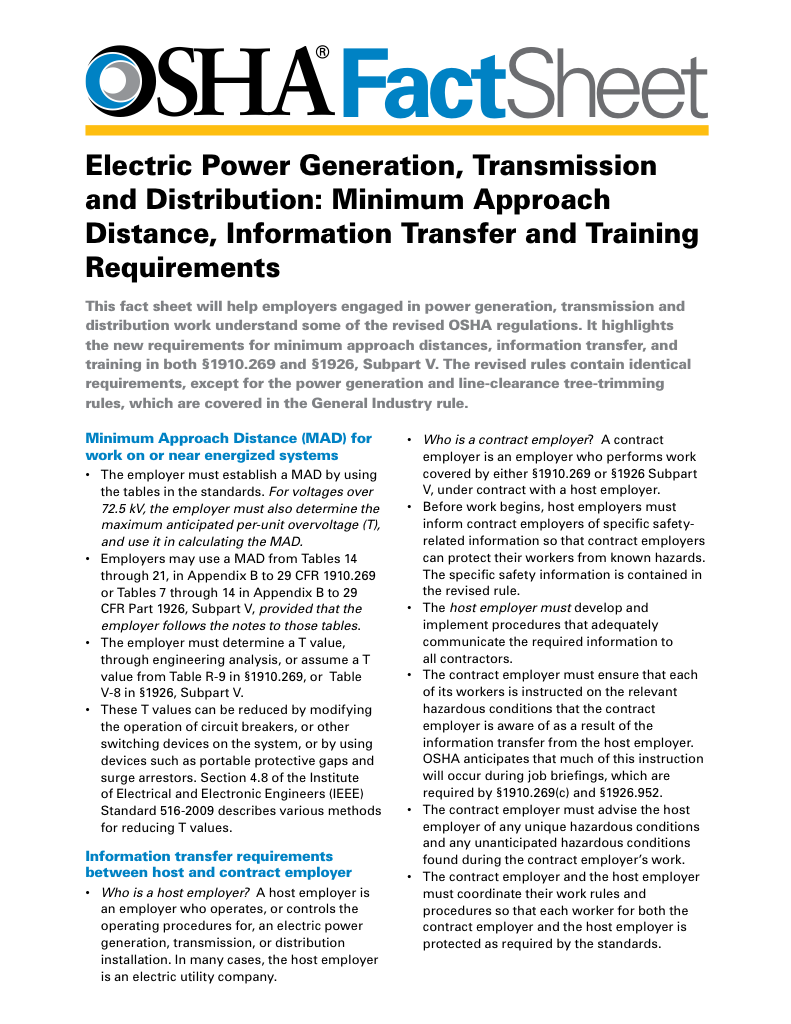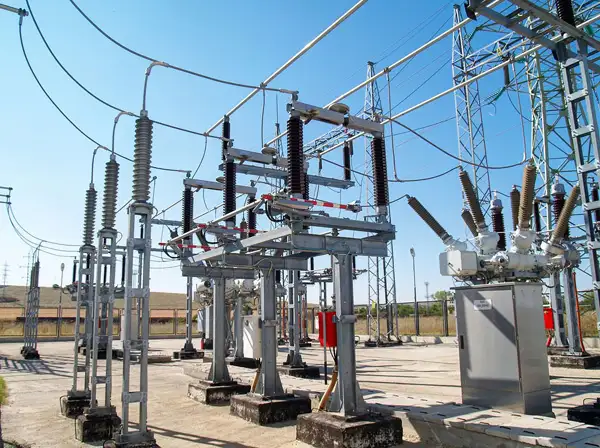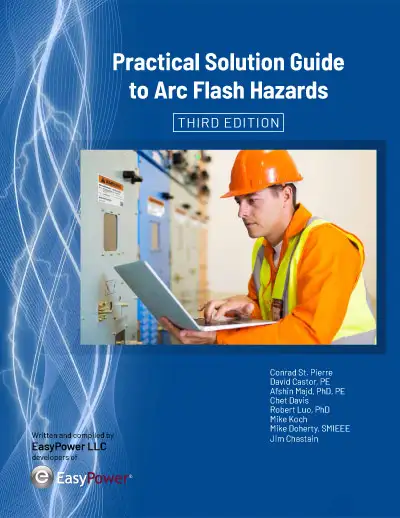Arc Flash Incident Explained
By R.W. Hurst, Editor
Arc Flash Training CSA Z462 - Electrical Safety Essentials
Our customized live online or in‑person group training can be delivered to your staff at your location.

- Live Online
- 6 hours Instructor-led
- Group Training Available
Download Our OSHA 3873 Fact Sheet – Minimum Approach Distance and Training Requirements

- Calculate MAD using voltage and overvoltage values
- Ensure proper communication between host and contract employers
- Meet OSHA training requirements for qualified electrical workers
Arc flash incident occurs during electrical faults, releasing intense heat, pressure, and light; engineers mitigate risk through NFPA 70E compliance, incident energy analysis, PPE selection, labeling, and lockout/tagout procedures in switchgear and MCCs.
Arc Flash Incident Overview and Best Practices
An arc flash incident is a catastrophic electrical explosion that poses significant risks to workers and equipment in various industries. These events occur when an electrical current passes through the air, creating an arc that releases intense heat, light, and pressure. The consequences of an arc flash (AF) event can be devastating, leading to severe injuries, fatalities, and extensive property damage. For foundational context, see the overview at what is arc flash to understand core principles.
Request a Free Training Quotation
What Are the Primary Causes?
An arc flash incident is a dangerous occurrence that can happen in any electrical system, often resulting in severe damage and injury. The primary causes include:
- Equipment Failure: Defects in electrical equipment, such as aging components, insulation failure, or faulty circuit breakers, can lead to an AF event. Regular maintenance and timely replacement of worn parts are crucial.
- Human Error: Mistakes made by personnel, such as incorrect installation, inadequate maintenance, or accidental contact with live parts, significantly increase the risk of arc flash incidents.
- Environmental Factors: Dust, moisture, and corrosion can degrade the performance of electrical systems, making them more susceptible to short circuits and AF events.
- Short Circuit: A short circuit can cause a massive release of energy, leading to an AF. This means arc flash occurring when there is a direct connection between conductors, bypassing the normal load.
For a deeper breakdown of contributing factors, what causes arc flash explains equipment, human, and environmental triggers in detail.
FREE EF Electrical Training Catalog
Download our FREE Electrical Training Catalog and explore a full range of expert-led electrical training courses.

- Live online and in-person courses available
- Real-time instruction with Q&A from industry experts
- Flexible scheduling for your convenience
Arc flash incidents pose significant risks in any workplace that involves phase to phase electrical equipment. Understanding the causes, implementing preventive measures, and having a robust response plan are critical to ensuring the safety of all personnel. Regular maintenance, proper training, and the use of personal protective equipment are essential components of a comprehensive safety strategy that can prevent the devastating impacts of an AF event. By thoroughly investigating and documenting any incidents that do occur, organizations can continuously improve their safety protocols and minimize the risk of future incidents. Additional context on hazards and mitigation is outlined in electrical arc flash resources available to safety teams.
An example of the hierarchy of methods in order of effectiveness is shown in Figure 5.1:
What Immediate Actions Should Be Taken?
The immediate response to an AF event is critical to minimizing harm and ensuring safety:
- Ensure Safety: Evacuate the area immediately and ensure that all personnel are accounted for. Isolate the affected area to prevent further exposure.
- Medical Assistance: Provide first aid to any injured individuals and call for emergency medical services. Burns and other injuries should be treated as quickly as possible.
- Secure the Area: Turn off the power supply to the affected electrical equipment if it is safe to do so. This helps prevent additional incidents.
- Report the Incident: Notify the appropriate authorities and supervisors about the incident to initiate an official response and investigation.
Guidance on supporting an arc flash victim includes stabilizing injuries and preventing secondary harm during rescue.
How Can Arc Flash Incidents Be Prevented in the Workplace?
Preventing arc flash incidents requires a comprehensive safety strategy that includes:
- Regular Maintenance: Schedule and perform routine maintenance on electrical equipment to ensure it is in good working condition. Replace faulty components, such as circuit breakers, before they cause problems.
- Employee Training: Train all employees on the dangers of AF events and the proper use of personal protective equipment (PPE). Ensure they understand the importance of following safety protocols.
- Use of PPE: Provide and enforce the use of appropriate PPE, including flame-resistant clothing, face shields, gloves, and hearing protection. Proper PPE significantly reduces the risk of injury during an AF event.
- Risk Assessment: Conduct regular risk assessments to identify potential hazards within the electrical system. Implement measures to mitigate these risks, such as upgrading equipment and improving safety procedures.
Understanding under what circumstances an arc flash occurs helps teams prioritize controls and maintenance schedules.
What Are the Typical Injuries and Health Impacts?
Arc flash incidents can cause a range of severe injuries and health impacts, including:
- Burns: The intense heat generated by an AF can cause second and third-degree burns, which can be life-threatening and require extensive medical treatment.
- Electric Shocks: Direct contact with energized parts during an AF event can lead to electric shocks, which can cause cardiac arrest or severe internal injuries.
- Hearing Damage: The loud noise from an arc flash explosion can result in temporary or permanent hearing loss.
- Psychological Effects: Witnessing or being involved in an arc flash incident can lead to psychological trauma, including anxiety and post-traumatic stress disorder (PTSD).
Clinical considerations and treatment pathways are summarized in arc flash injuries for occupational health practitioners.
How Should an Arc Flash Incident Be Investigated and Documented?
A thorough investigation and documentation process is essential to understand the causes of an AF event and prevent future occurrences:
- Evidence Collection: Gather evidence from the scene, including damaged equipment, photographs, and witness statements. This helps in understanding the sequence of events leading up to the incident.
- Interview Witnesses: Conduct interviews with all personnel present during the incident to gather detailed accounts of what happened. This can provide insights into potential procedural failures or human errors.
- Analyze Causes: Analyze the collected evidence to identify the root cause of the incident. Determine whether it was due to equipment failure, human error, or environmental factors.
- Document Findings: Prepare a detailed report documenting the findings of the investigation. Include recommendations for corrective actions to address the identified causes and prevent similar incidents in the future.
- Implement Changes: Based on the investigation's findings, implement necessary changes to safety procedures, employee training, and equipment maintenance protocols.
Investigators benefit from understanding how an arc flash occurs when reconstructing event sequences.
Sign Up for Electricity Forum’s Arc Flash Newsletter
Stay informed with our FREE Arc Flash Newsletter — get the latest news, breakthrough technologies, and expert insights, delivered straight to your inbox.







